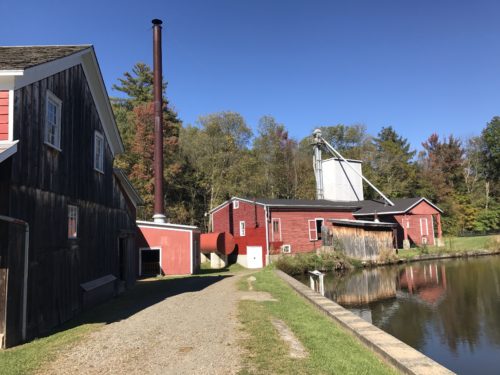In the past two posts, I’ve mentioned plummeting temps, but I had no idea what I was talking about. Last night, we dropped to 34!!! By 10am today, it was still only 47. But the sun was shining brilliantly.
We opted to stay home this morning and have church with Pastor Mike. We’re behind on his Isaiah series, and although we’d like to catch up before next Sunday, I don’t think that’s gonna happen. But the two messages today were so moving! He spoke on Isaiah 53 and 54 – describing Jesus and what he endured for us and why, and then the inner joy and peace we should have as believers because of His sacrifice for us. If you are ever so inclined, you can listen to one of the best teachers we’ve ever had to privilege to sit under at www.thechapel.life.

Our new home at Crazy Acres, New York
After lunch we visited an extremely interesting place! The Hanford Mill Museum. I’ll never remember everything we learned – even with Blaine’s steel-trap mind helping me! We must have taken a hundred pictures today! Most of which will be included. There’s more than a few videos as well.
One of the best things about it was the fact that they actually demonstrate the equipment for you. And then there’s all the hands-on activities they sponsor throughout the year, like their ice festival in February and workshops to learn how to use the equipment.
Almost all of the equipment is original. If it’s not, it’s period pieces. I remember the guide telling us that the steam engine was being sold on ebay and one of the staff members happened upon it. : )

Obviously, I had to take this picture on my laptop.
If they had it up at the museum somewhere, I didn’t see it.
From their website:
An operating mill site since 1846, for most of its commercial life Hanford Mills was owned and operated by the family of David Josiah Hanford, who purchased the mill in 1860.
Under the Hanfords, the mill grew into a rural industrial complex that included a sawmill, gristmill, fee mill, woodworking shop and hardware store.
In 1898, Hanford Mills harnessed the waters of Kortright Creek to provide the town with its first electricity. Through time, the Hanfords also used steam and gasoline engines to power the mill and its electric dynamo.
The mill closed in 1967, re-opening later that year as a museum. In 1973 Hanford Mills Museum was chartered by the State of New York. Its significance as one of the last nineteenth century mills to survive intact earned it a place on the State and National Registers of Historic Places.
Here’s some additional information from their brochure:
The People
Jonathan B. Parris built the first sawmill on the site in 1846. The Mill changed hands several times before David Josiah (DJ) Hanford bought it in 1860. DJ and his sons, Horace and Herbert Willis (Will), expanded the Mill complex and added new processes and machines.

We took this picture of John Parris that was in the farm house.
I can’t find any pictures of the Hanfords – even on the web.
In 1945, Mill employees Frank, Mike and Joe Pizza (pronounced with a soft ‘i’ as in ‘pit’ – not peet-za 😊) bought the Mill from Horace and ran it until the mid-1960’s. When the business closed, local resident Ken Kelso bought much of the property and machinery. He started a museum that eventually became Hanford Mills Museum.
Power
Water – in the form of liquid and gas – has been used to power the Mill, beginning with a simple wooden waterwheel called a flutter wheel. To boost production, the Hanfords installed horizontal water turbines between 1868-1900 and a vertical steam engine in 1881. They expanded the steam power plant in 1895 when they installed a steam boiler to power a large horizontal steam engine. A 1926 Fitz overshot waterwheel replaced steam power at the Mill by the last 1920’s.

The water power is generated under the mill.
They open a gate from upstairs that allows the water to flow in.
The water source is a reservoir pond that they built. Whenever needed, they can divert the creek that runs through the property.

The vertical steam engine

Someone wanted to commemorate the arrival of the boiler.
The Hanfords had to contact the road departments to make sure they could actually get the boiler to their mill because it was so big and heavy. : )
The piece you see is the inside – the boiler itself.


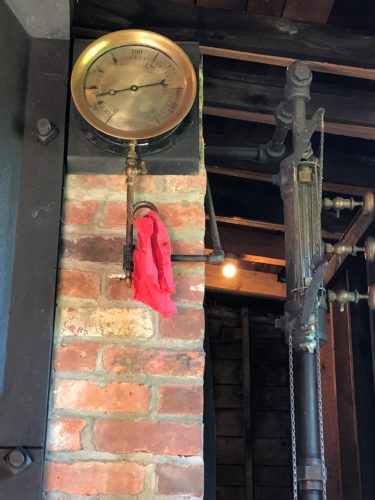
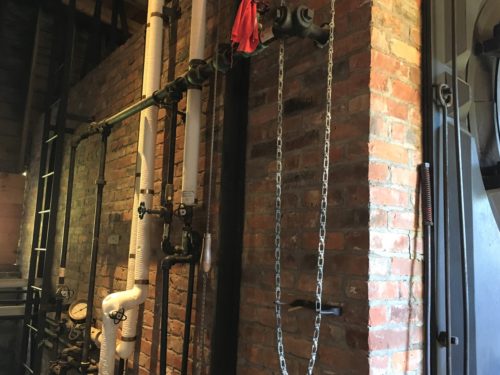

I wanted to give it some perspective – she’s standing on the top of a 3-step stool

This is the engine they found on ebay.
It replaced the vertical one.
This little thing is what they installed that huge boiler for!

Water and steam were not the only sources of power. In 1910, Horace purchased a gasoline engine to run a dynamo. This electric generator powered light bulbs in the Mill and the hamlet of East Meredith.

This little thing provided power for the mill lights, and they sold electricity to the people in town for $5 per light bulb per year


Products
The Mill’s products supported the rural community of East Meredith. Mill workers sawed lumber and made wood products such as butter tub covers, milk crates, molding, shingles, and broom and tool handles. The gristmill ground grains into animal feed for local farms. Local residents bought ice cut from the mill pond for their iceboxes. The Hanfords also owned and operated a hardware store where they sold tools, engines, tractors, and other machinery.

This is the part of the mill where they cut the logs
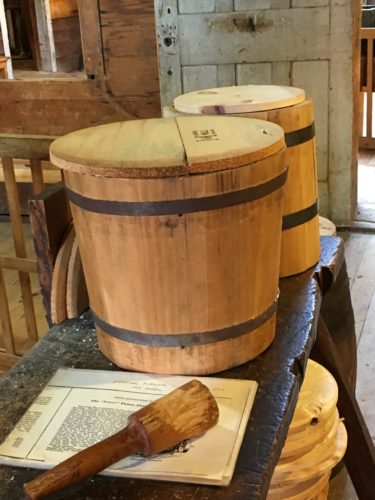
The butter tubs weren’t made here, these are examples.
The tops and bottoms were made here, though.
First the pieces of square wood were passed through a machine that made them ‘tongue and grove’. This allowed for moisture swelling and a tight seal.
They were fit together and put through a machine that rounded them to specifications and then beveled.

The square wood getting ready to be rounded


This machine makes the handles in the crates. These particular ones are for kits, so they’re not cut all the way through.

This is where they did all the scroll work

Waiting for the water to power up the machine

Blaine trying his hand at stripping the bark off the wood so it can be put on the single-making machine.

This is a shingle-making machine. They slice the wood, then smooth the edges.
The saw blade actually rocks back and forth so there’s no waste because shingles are thick on one end and thin on the other. (BTW – she’s worked here for 18 years and retiring soon, he’s worked here for 1 month.)
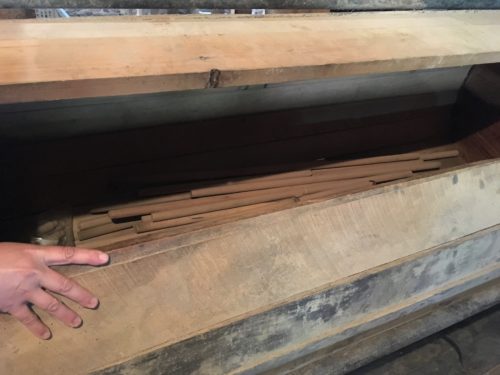
The picture doesn’t show it very well, but this is a large wooden barrel filled with broom handles.
After the handles were made, they put them in here and spun it around to smooth the wood.

One of the grinding wheels
Here are some other random pictures from the inside of the mill area:


This is a portable steam engine



Extra wheels that people have donated to be used for replacement parts

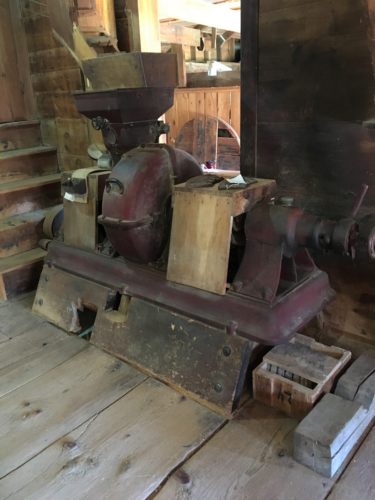

And now we have the visit to the farm house. The guide took us inside and just let us look around. The upstairs is closed to the public. It is furnished to represent life in the 1920’s. All the wood – woodwork, cabinets, stairs, etc. and the house itself was made at the mill, in 1909.





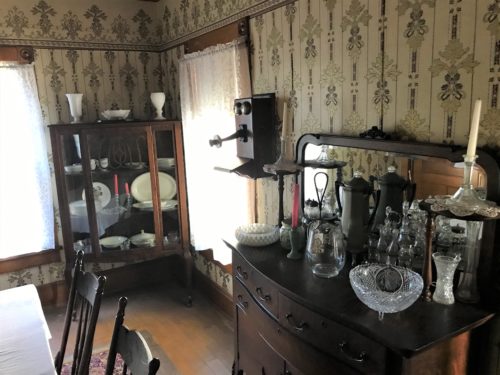
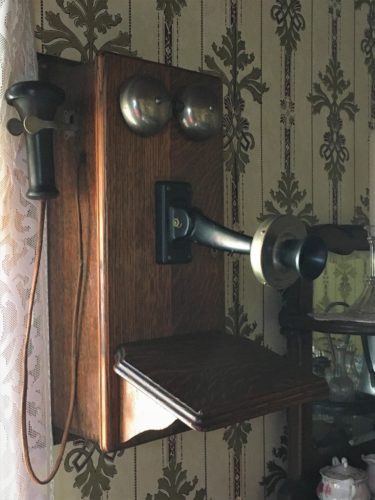


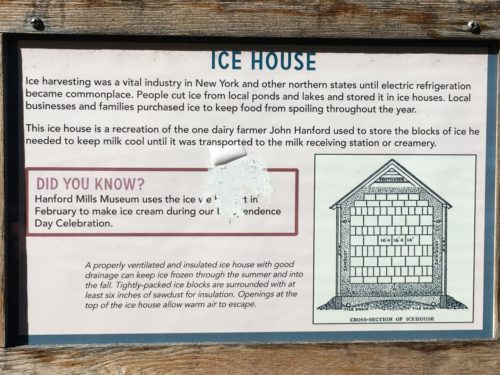
The ice house holds between 8-10 TONS of ice cut from the Mill Pond

The guide leaned in and dug around in the sawdust to uncover the ice so we could see it. (Even the ‘scraps’ from the mill have a purpose)

There’s still ice in the ice house since their last harvest in February!
There’s actually about 3 layers left!
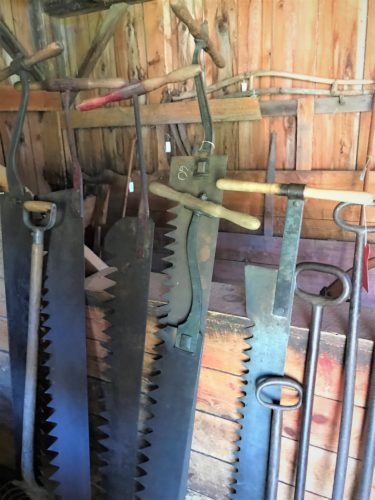
Ice harvesting tools
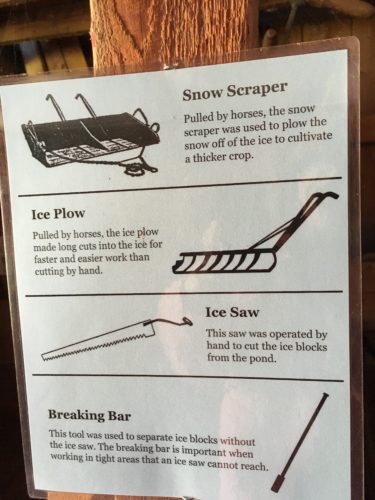


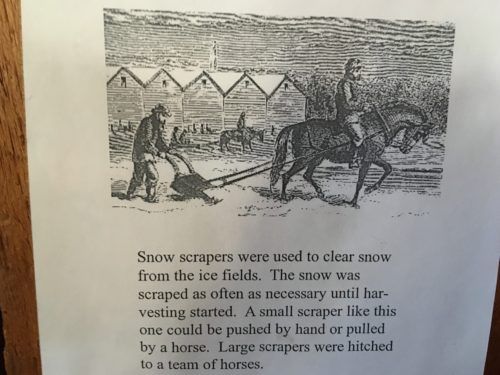
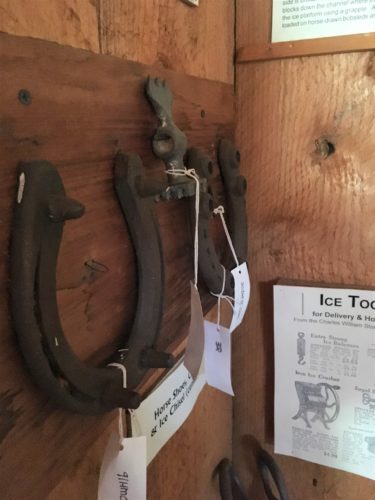
Ice cleats for the horses. : )


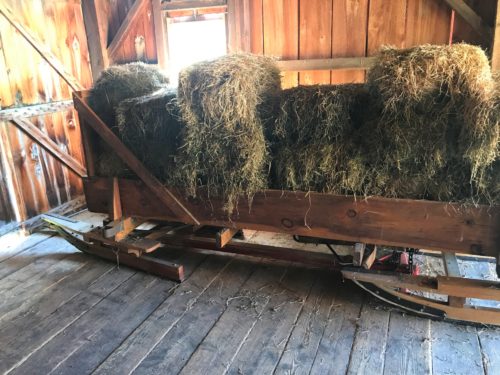
Note the sled runners
The Hanfords also had their own forge they used brand some of their products and make metal reinforcing bands for Mill-made milk crates.
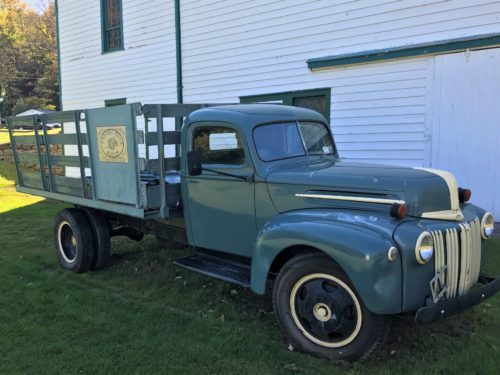
1947 Ford Pickup
They used this to make deliveries.
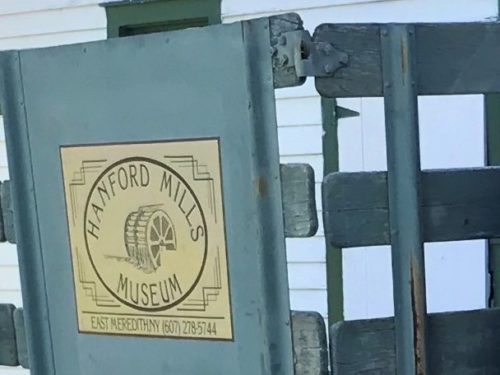


Back in the day, the railroad came right beside the mill. Convenient!
We walked the old track to see where the water supply comes in – the Kortright Creek. (see below for more info on the train)

The reservoir is fed by the waters of the creek via a head race, and the water is fed back into the creek through the tail race. Unfortunately, we didn’t take a picture of the tail race, but we saw it. It’s sort of a trough that runs from the mill to a place in the creek.
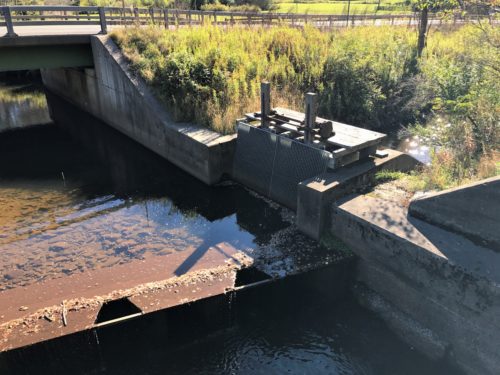
The gate from the creek to the reservoir
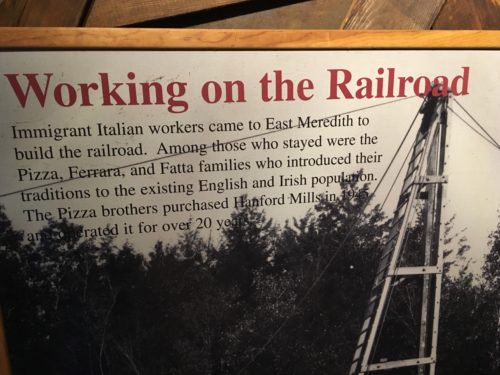
The Ulster & Delaware Railroad completed a route from Oneonta to Kingston right through East Meredith (where the Mill is) in 1900. Trains stopped at a siding behind the Mill.
The tracks were removed in the late 1960s, but the Museum owns about one mile of railroad bed and maintains it as a rail trail.
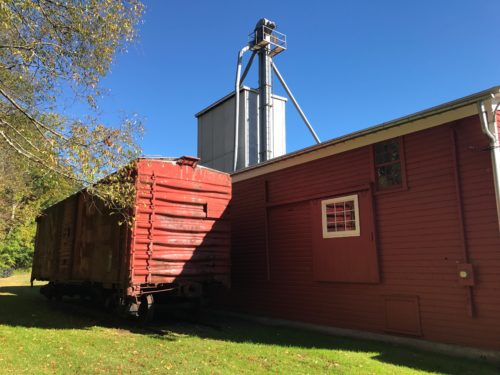
Since the railroad ran right here, they have this old box car behind the museum building. The railroad stopped coming through here in 1965.
The Hanfords (every diversifying!) also ran a hardware store and sold engines and agricultural equipment.
Some things from inside the museum building:




The man this article was written about was from the area.
I forgot to take a picture of him.
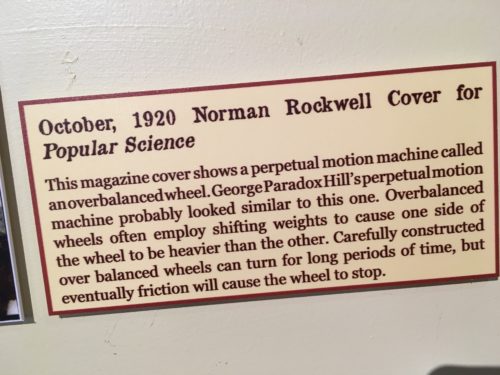

Just look at how they decimated the trees!
Even in 1940, there still aren’t very many.
And lastly, some views of the outside:

